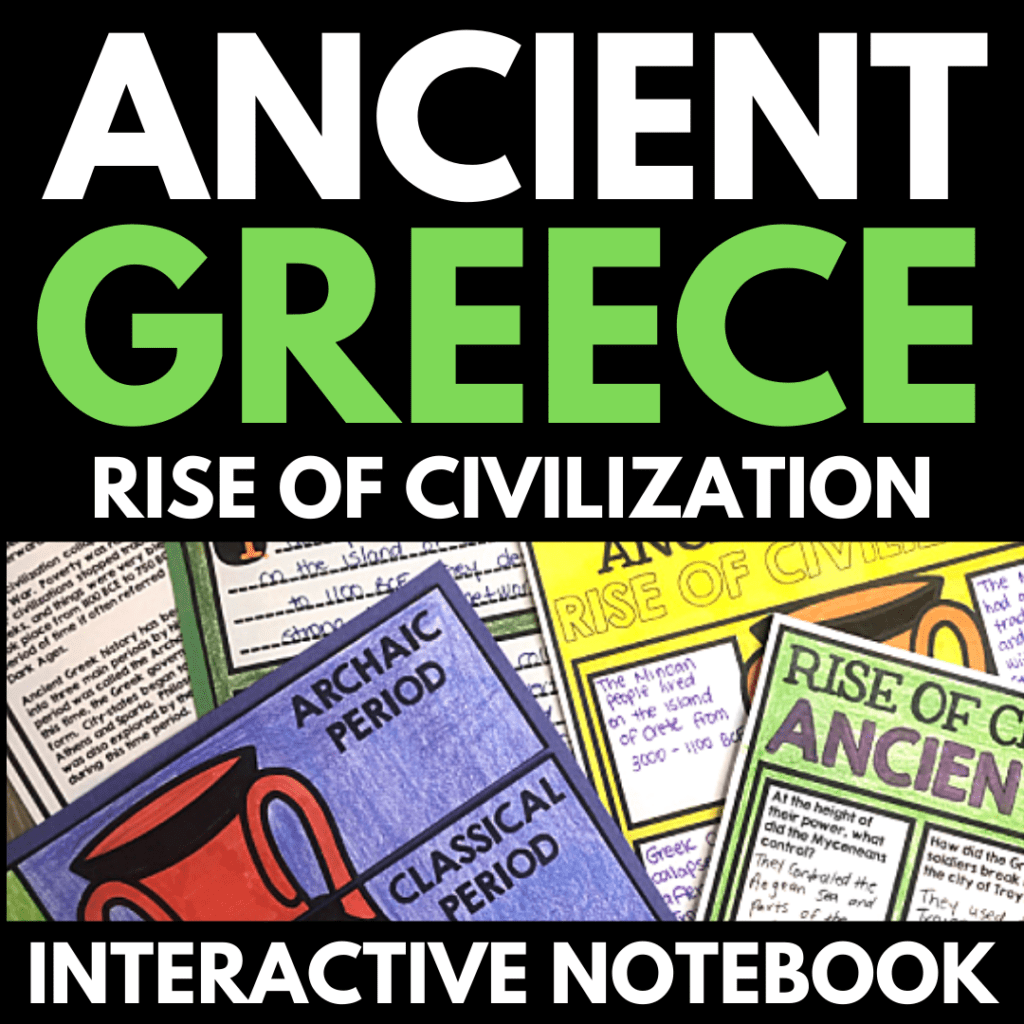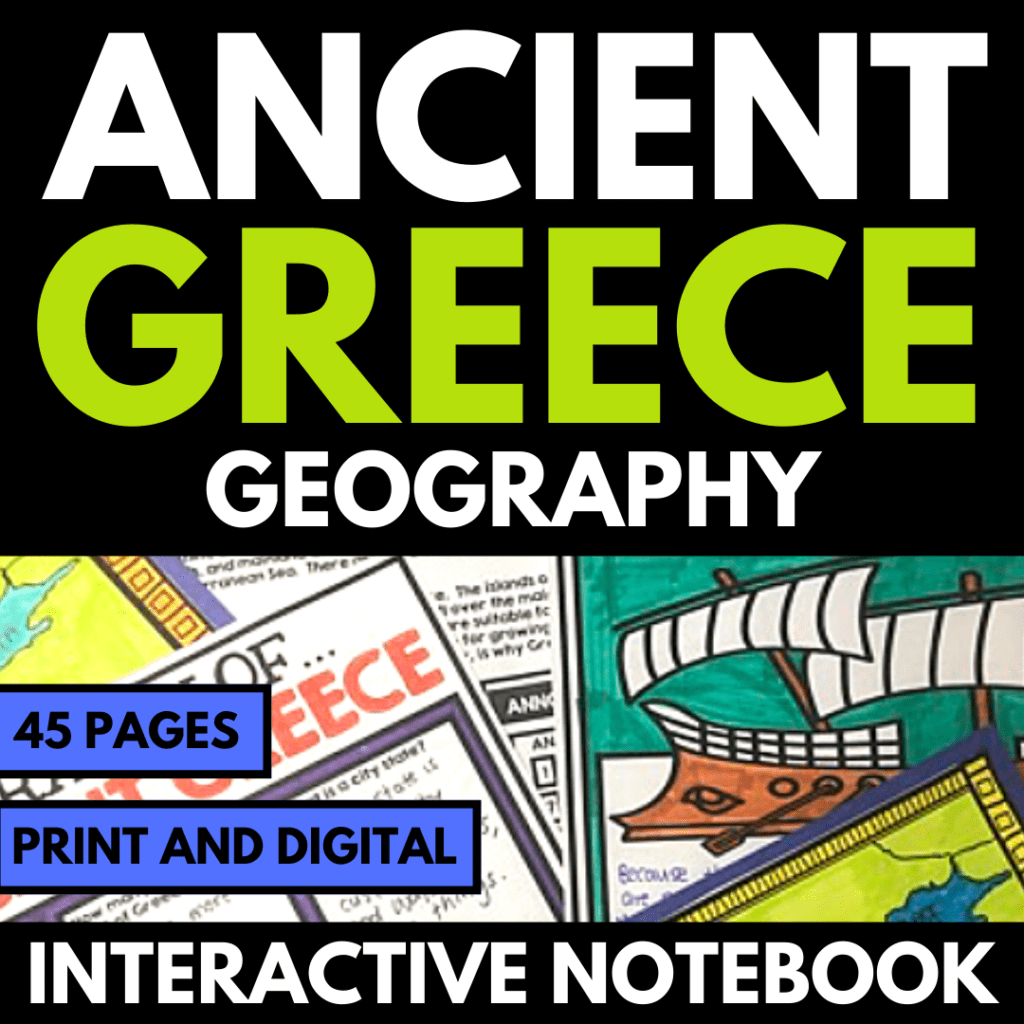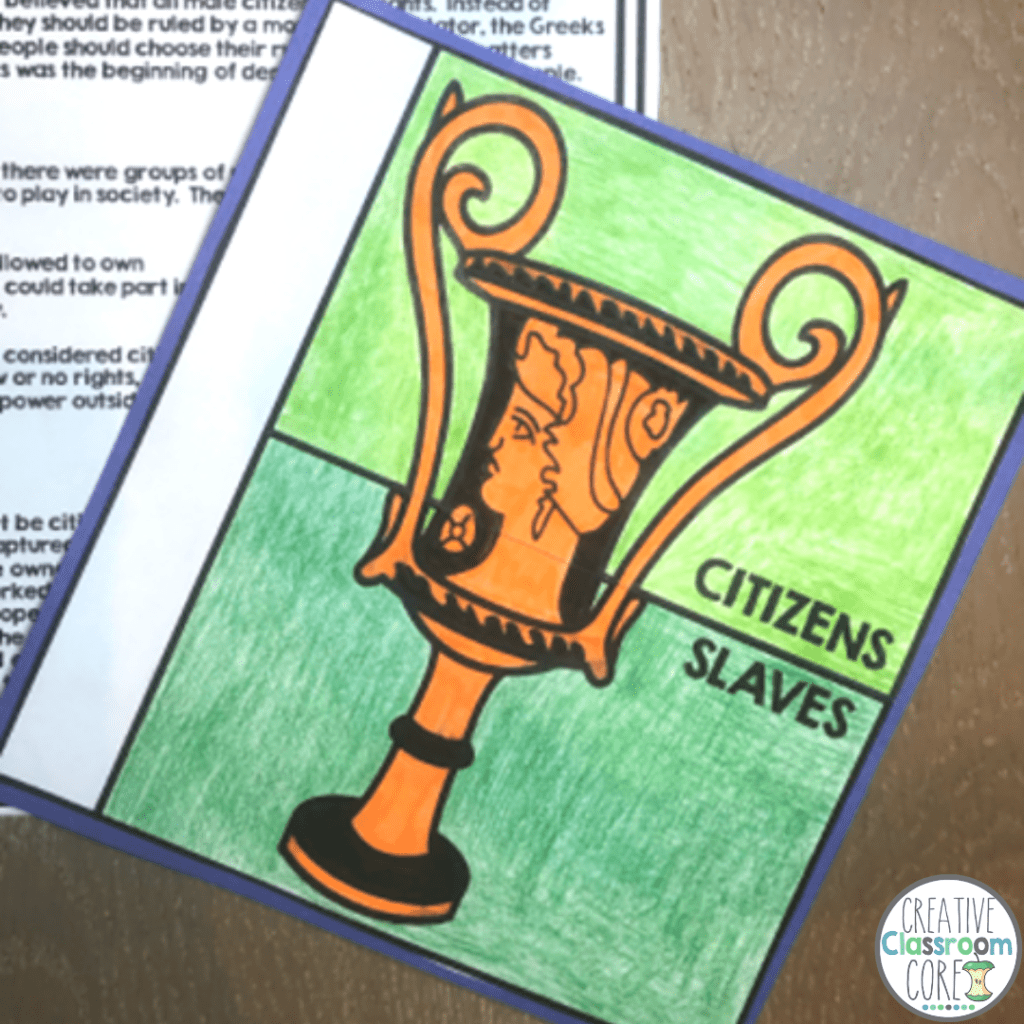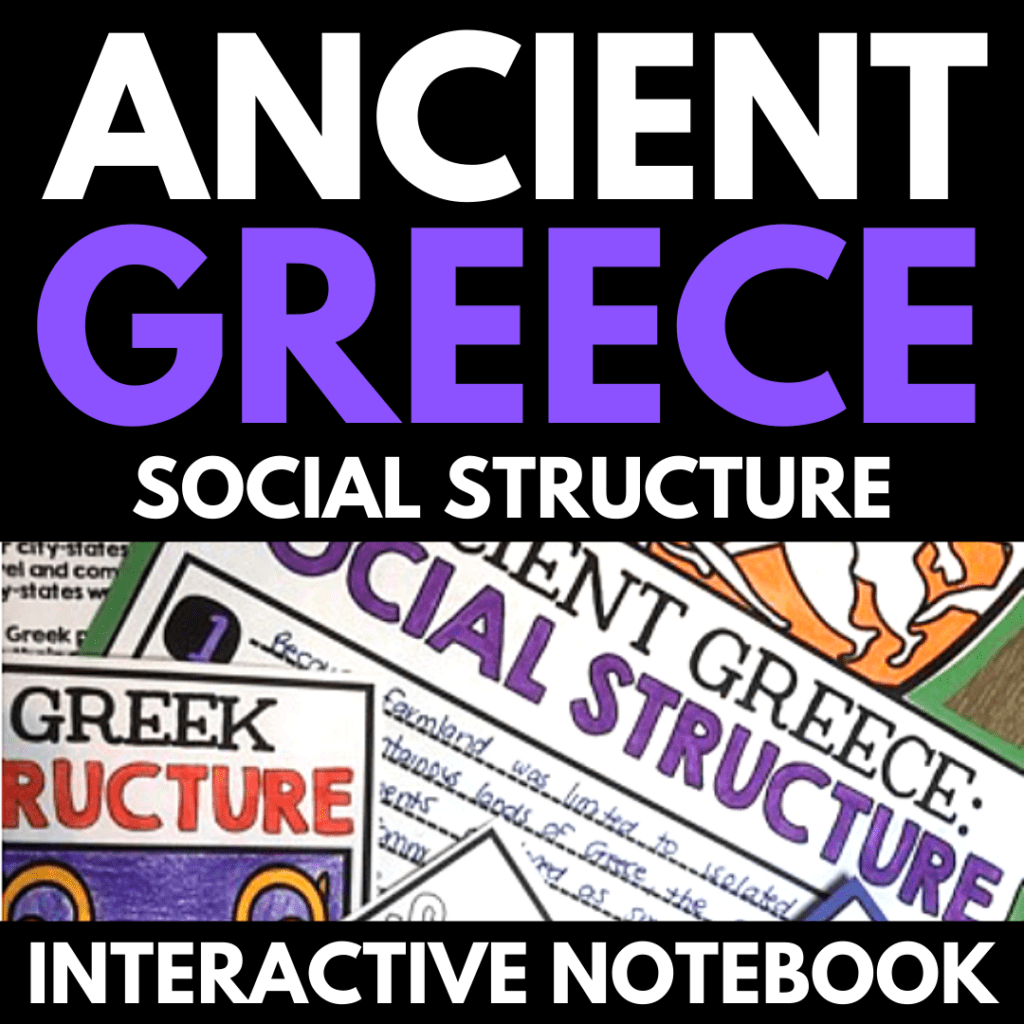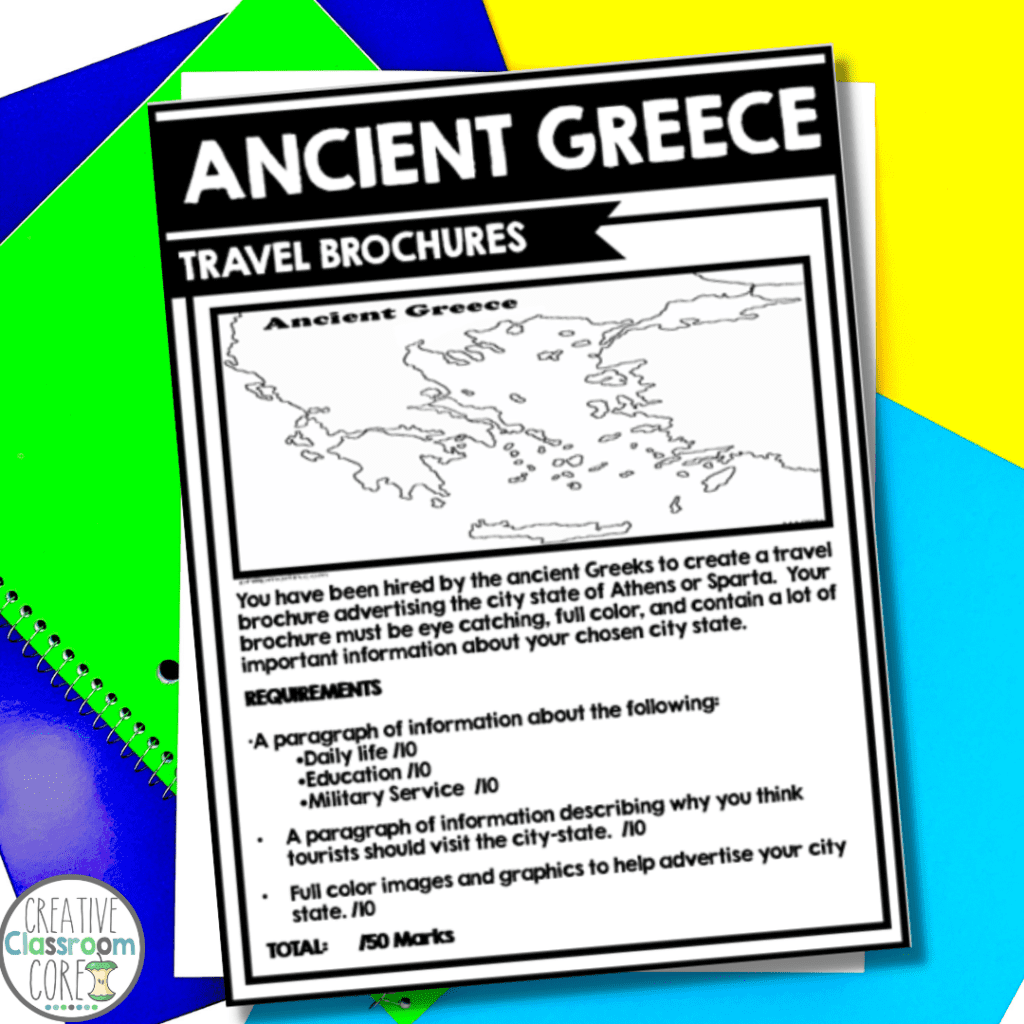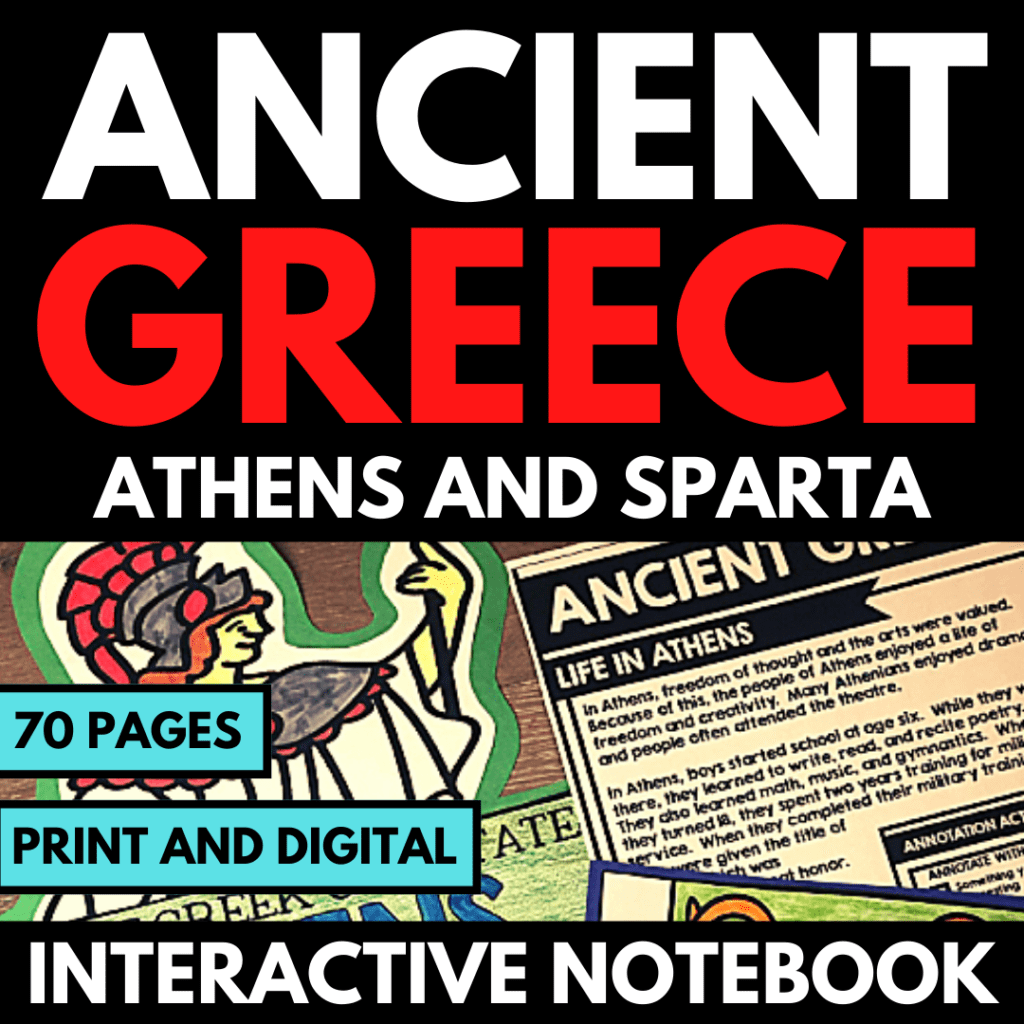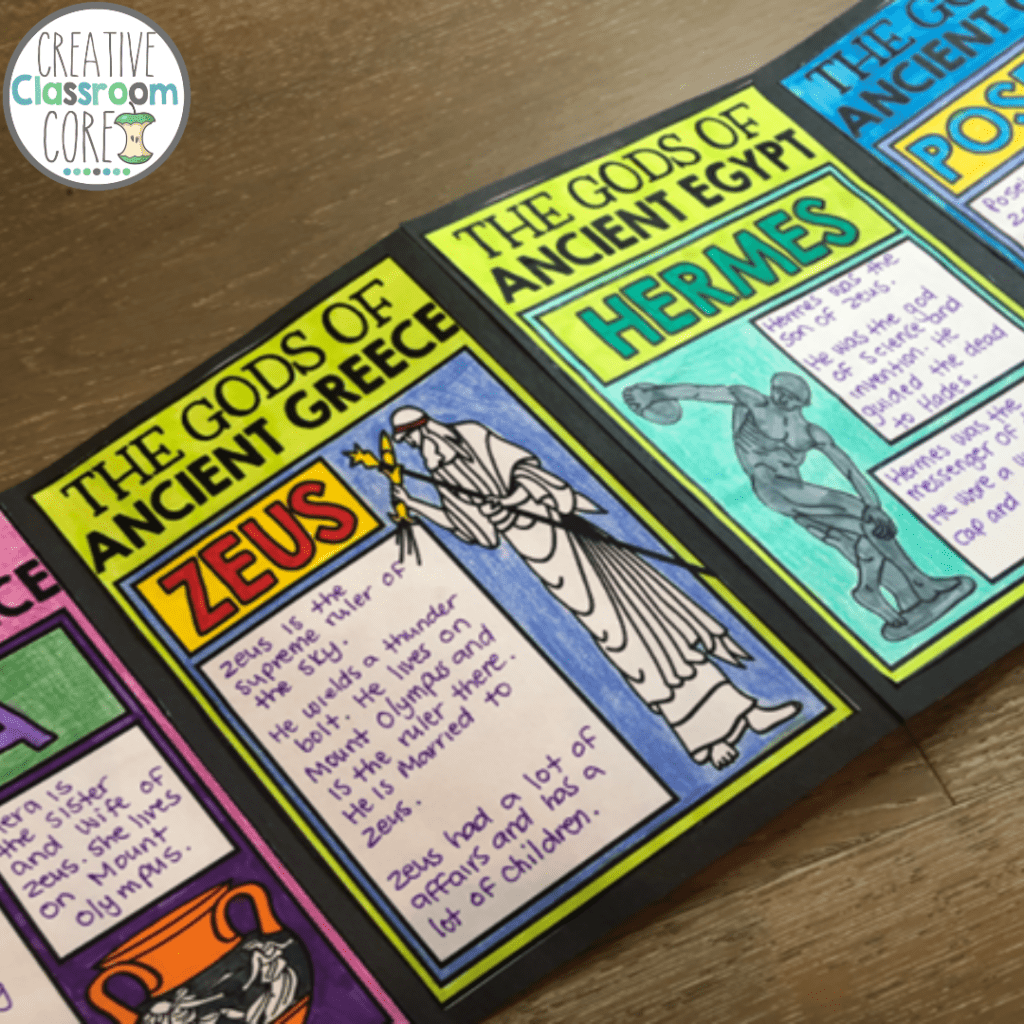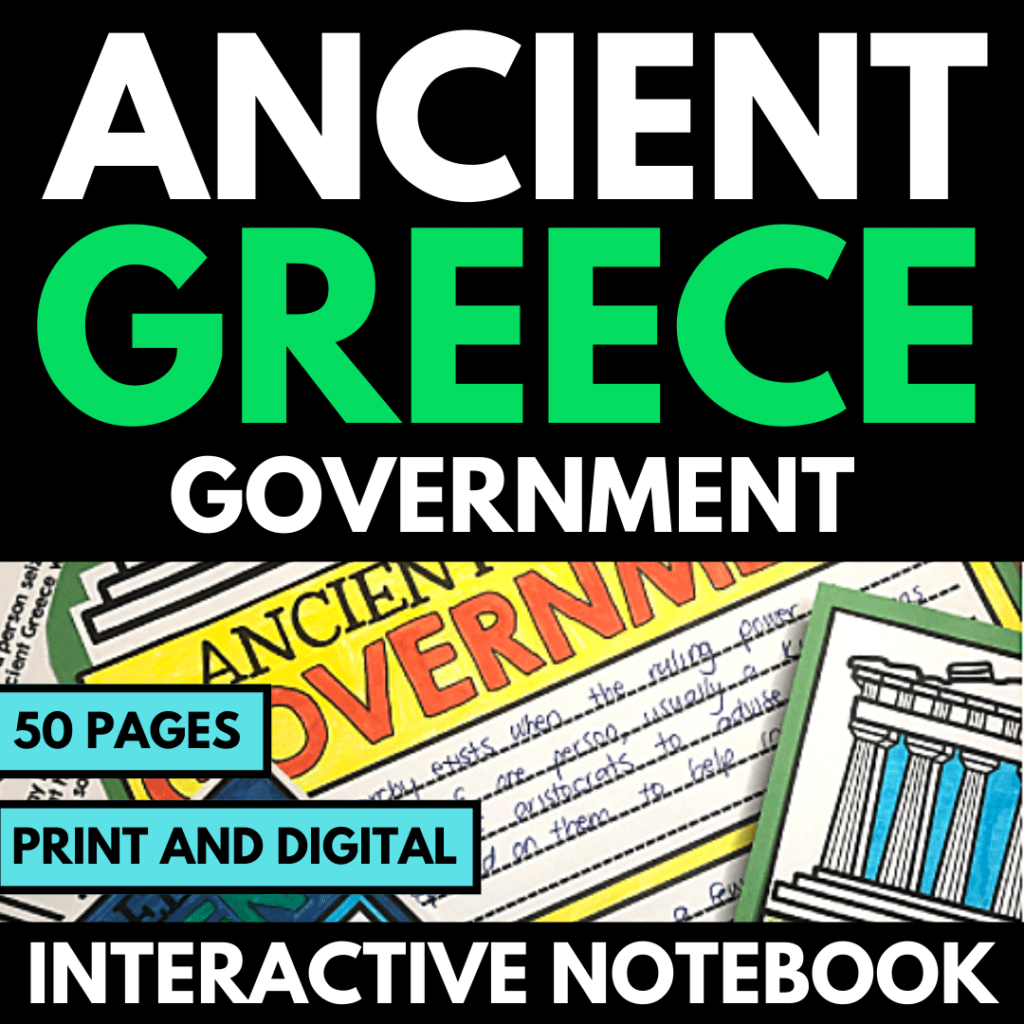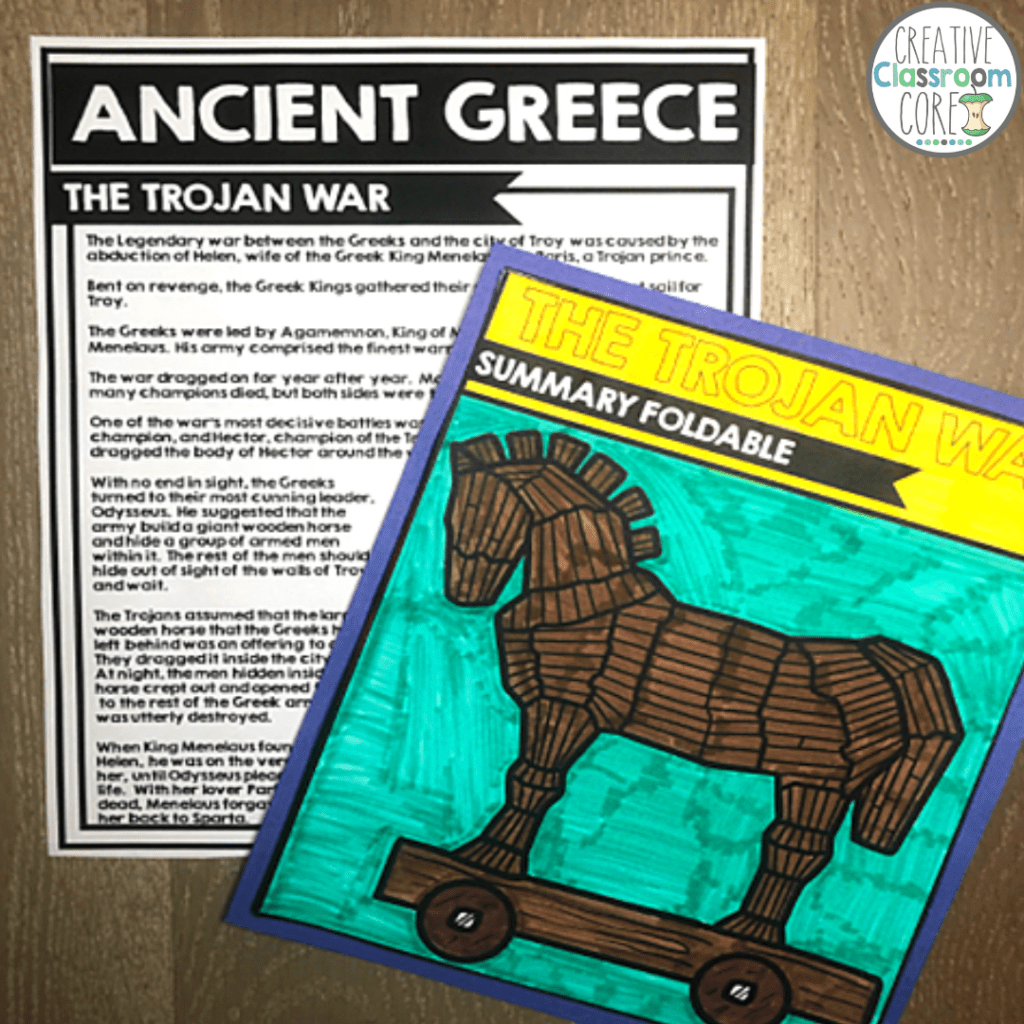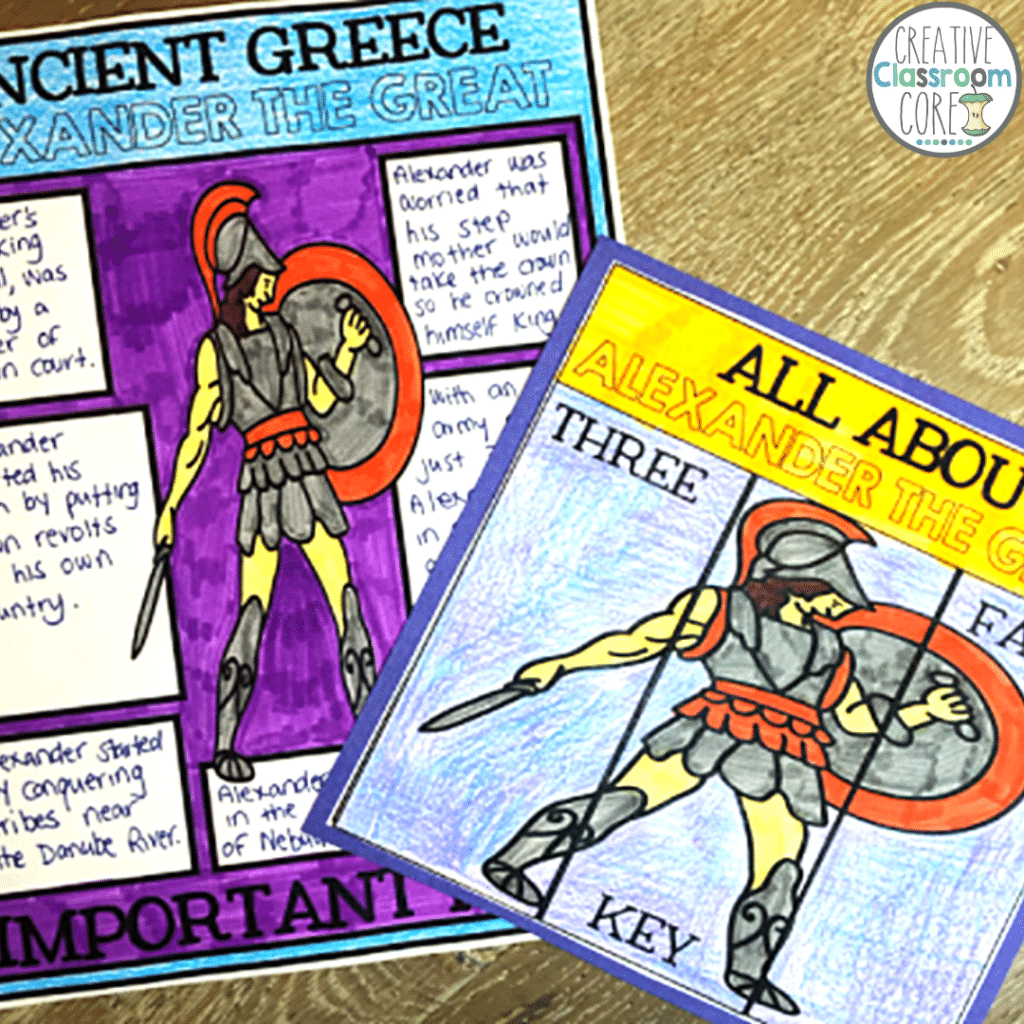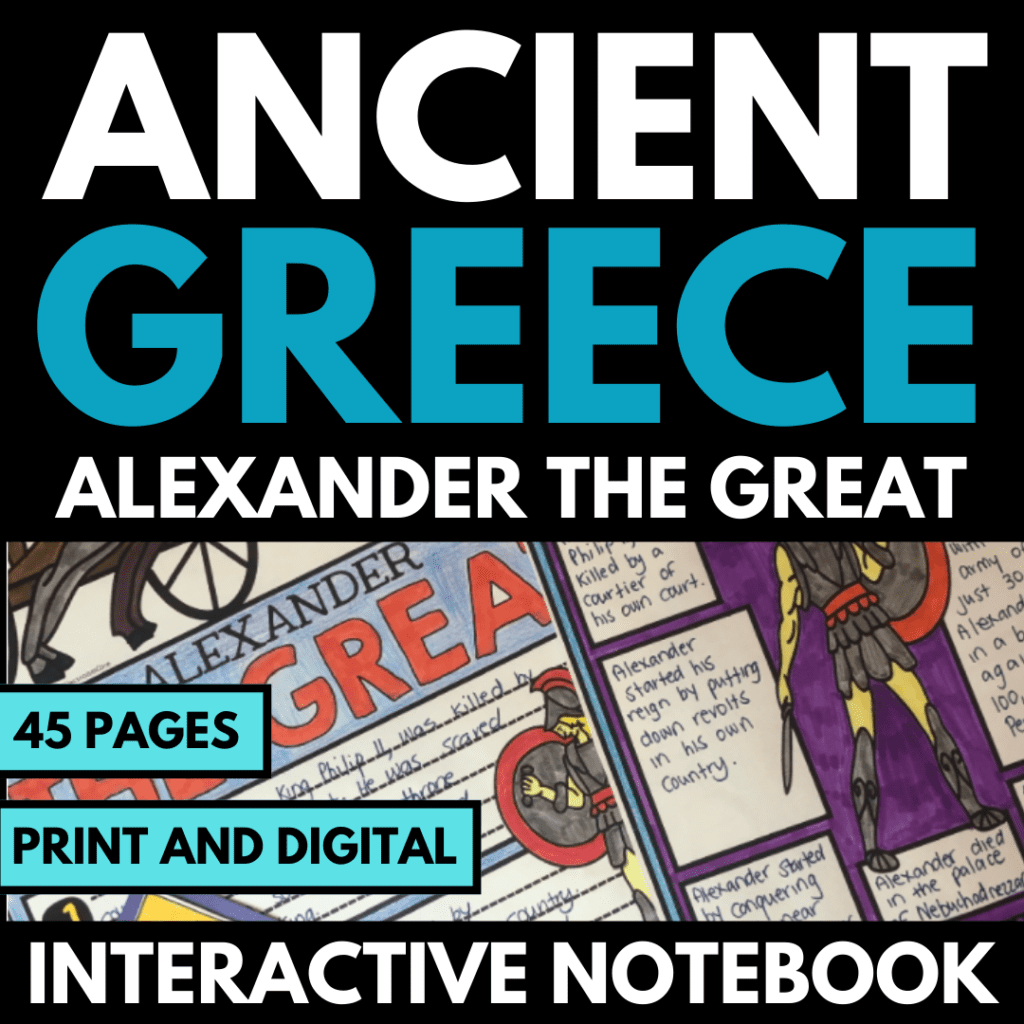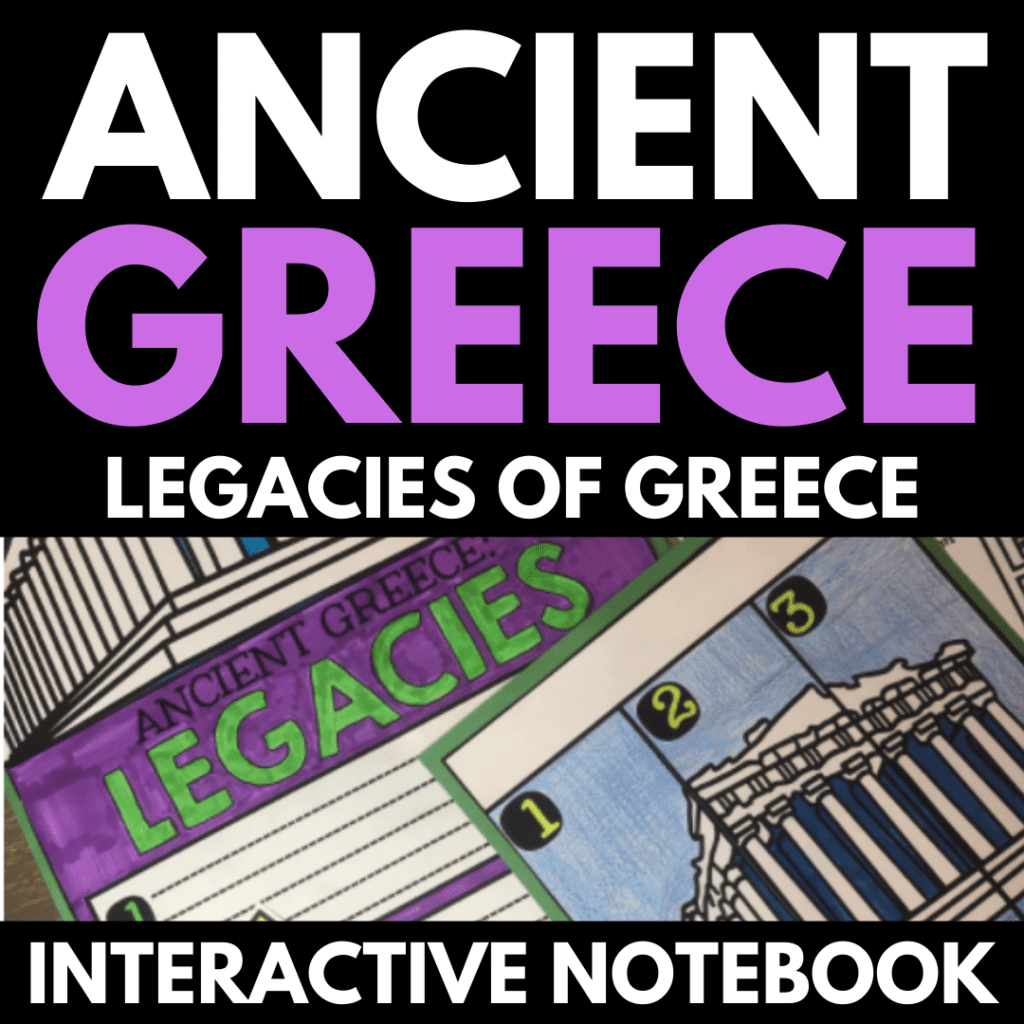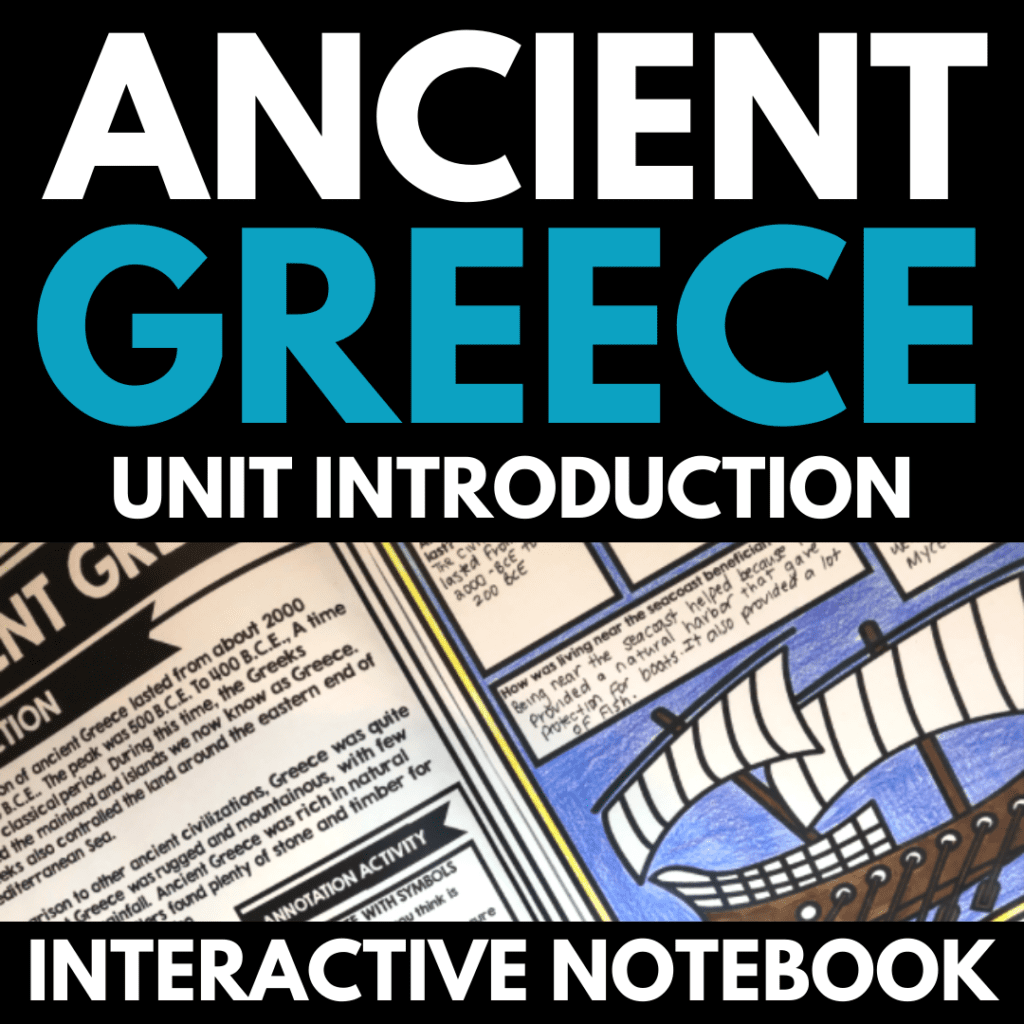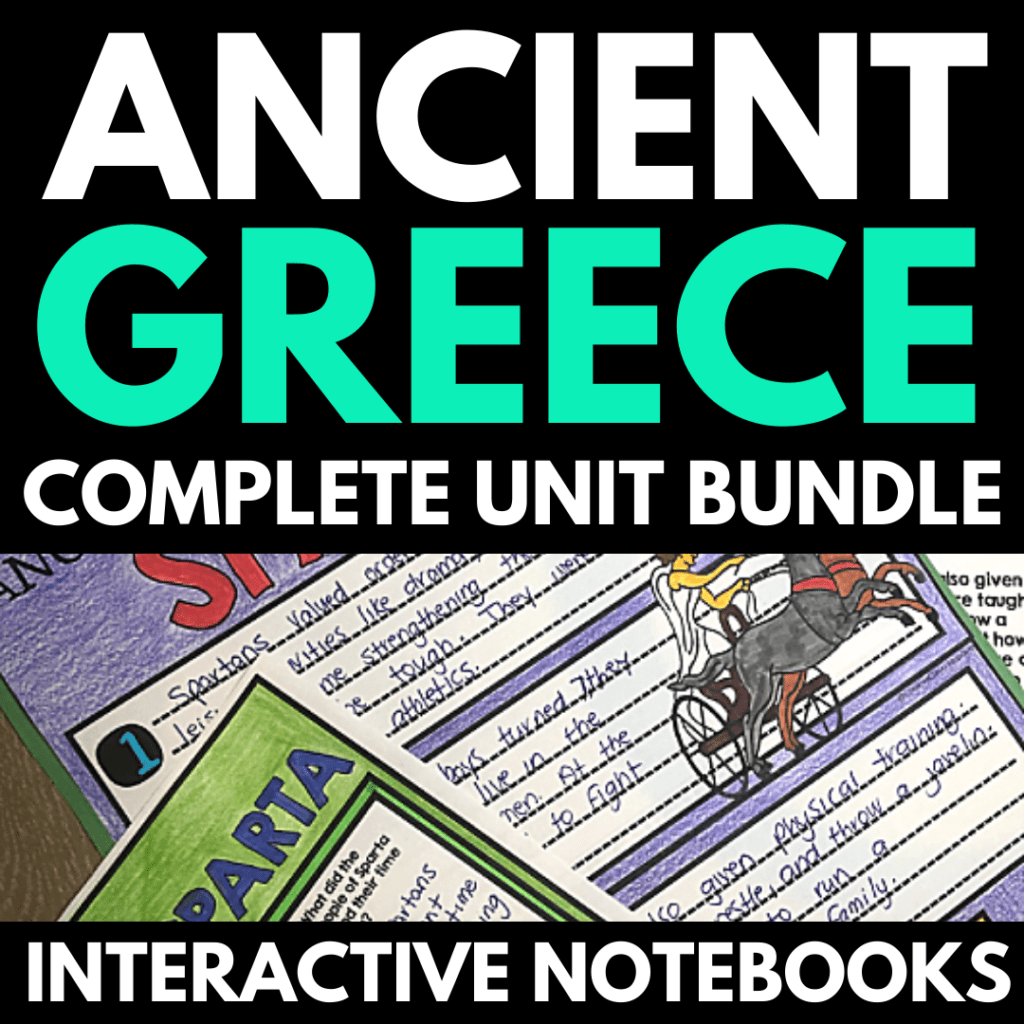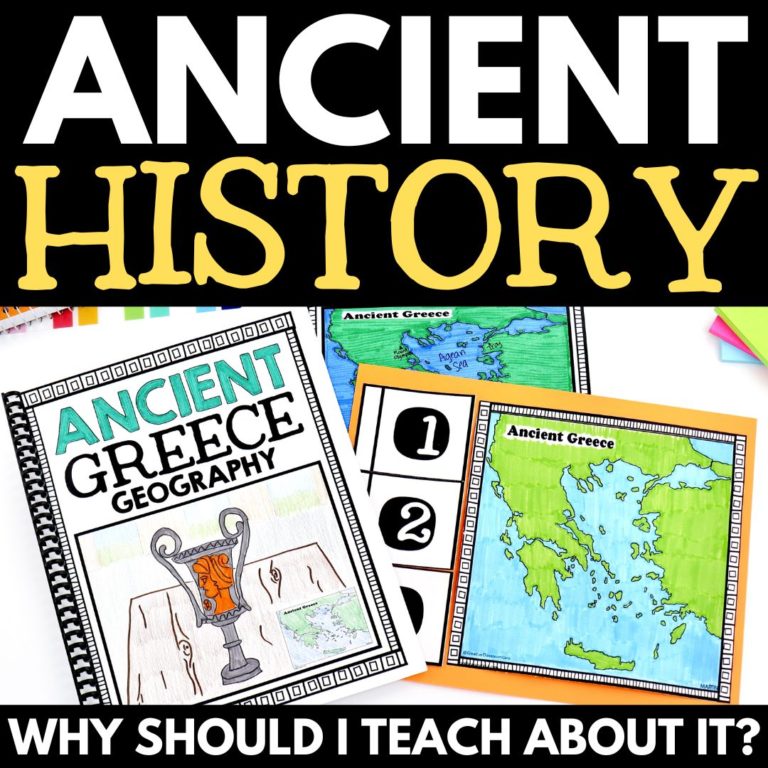9 Essential topics for your next ancient Greece Unit
By MARISSA DESPINS Updated March 21, 2024
Getting ready to plan your next Ancient Greece Unit? I have you covered! Ancient Civilizations are definitely my jam, as I have spent close to 20 years of my teaching career in a middle school history classroom. The history of Ancient Greece is a favorite of my students. The stories of gods and goddesses, the Trojan War, and Alexander the Great bring almost instant engagement.
Looking for some ready to go teaching materials for your next Ancient Greece unit? Click the button or image below to see all of the Ancient Greece activities available in my TPT shop!
Planning Your Ancient Greece Unit
When I sit down to plan out my Ancient Greece unit , I start with the following 9 topics: Rise of Civilization, Geography, Social Structure, Athens and Sparta, Gods and Goddesses, Government, the Trojan War, Alexander the Great, and Legacies. Next, I flush out each individual topic. To do this, I focus on the key information I want students to take away.

Below I share some of the reasons why I focus on each topic, as well as some fun activities to do along with them. All of these activities have been classroom tested, and have been favorites of close to 20 year’s worth of middle school history students.
For additional information about teaching your next Ancient Greece unit, check out our post about Ancient Greece Interactive Notebooks!
Rise of civilization
It is a good idea to start your Ancient Greece unit with some discussion about the Rise of Civilization. It helps provide a solid foundation and understanding of the periods of Ancient Greece.
Ancient Greek history is divided up into three main periods by historians. First, we have the period known as the Archaic Period. During this time, the Greek government began to form. City-states began to rise, such as Athens and Sparta. Philosophy and Theatre was also explored by the Ancient Greeks during this time period.
Second, we have the period of Ancient Greece that is referred to as the Classical Period. During this time, democracy was introduced. Athens and Sparta fought in the Peloponnesian Wars during this time, and Alexander the Great rose to power.
Lastly, we have the period of Ancient Greece known as the Hellenistic Period. During this time, Alexander the Great died, and Greece began to decline in power. Eventually, Ancient Greece was conquered by Rome.
To help introduce these different periods, I have my students read through some passages and annotate the text. Next, I have them answer key questions. I really like using the question pages pictured below, as the visual elements make great additions to their interactive notebooks. Finally, I have students color up their pages and glue them into their notebooks. Then, they can refer back to them throughout the unit, or use them for review.
Interested in grabbing a mini Ancient Greece unit all about the Rise of Civilization to use with your history students? Click here or on the image below!
Geography
Geography is an essential topic for any Ancient Greece unit. Learning about geography helps students visualize the area. The development of civilizations are largely shaped by the area surrounding them, and Ancient Greece is certainly no different.
Greece is a peninsula made up of small peninsulas and islands. Smaller peninsulas stuck out from the main Greek peninsula, forming a large amount of natural coastline and many natural harbors. Greece itself has more that 1400 islands. Mainland Greece is almost completely surrounded by the Mediterranean Sea. As a result, there are no areas of Greece that are far from the sea.
There are a lot of mountains in Greece. The islands of Greece are mostly mountain peaks. The mountains are all over the mainland of Greece. Only small spaces between the mountains are suitable for farming. As a result, only about 1/5 of Greece is suitable for growing crops. This, and the fact that Greece is so close to the water, is why Greece soon came to depend on fishing and trading.
As we work through the topic of geography, I have my students create a fun foldable map of Ancient Greece. First, students color and label a map. Next, they write about the key geographical factors that helped shape the civilization.
Want to snag a mini unit all about Ancient Greek Geography to add to your lessons? Click here or on the image below!
Looking for ways to make your Ancient Greece unit even more engaging? Check out our post on boosting history classroom engagement!
Social Structure
In Greek cities, there were groups of people with different rights and roles to play in society. The two main groups were citizens and slaves.
Citizens were allowed to own property. They could take part in politics and law. Only men were considered citizens. In contrast, women had few or no rights, and had little or no power outside of their homes.
Slaves could not be citizens. They were usually captured prisoners of war. They were owned by the people they worked for and bought and sold like property. Most slaves were paid for the work they did. If a slave saved enough money, they could buy their freedom.
As we read through information on citizens and slaves in Ancient Greece, I have my students complete the foldable activity shown below. Students use the foldable template to compare and contrast the similarities and differences between the two social groups.
You can grab a mini Ancient Greece unit all about the social structure of Ancient Greece by clicking here or on the image below!
Athens and Sparta
Ancient Greece was not a united country like it is today. Farmland was limited to isolated pockets in the mountainous lands of Greece. As a result, the earliest Greek settlements developed as small, independent communities cut off from each other. A city-state was based around one city, and included all the surrounding farms, villages, and houses.
The main Greek city-states were Athens, Sparta, Corinth, Delphi, Olympia, Thebes, and Argos. At the height of Greek civilization, Athens and Sparta were the most influential. Each community developed their own customs, beliefs, and ways of doing things.
Because each city-state was so different, the city-states did not always get along. Consequently, they were often at war with one another.
As Athens and Sparta were the most influential city-states during this time period, I spend a lot of time with my students going through the similarities and differences of the two areas. Afterwards, I have students choose their favorite city-state and create a full color travel brochure to entice people to visit. This is a great way to review key facts about each area, and the completed projects make great hallway displays or interactive notebook additions!
Pick up a copy of a mini unit all about Athens and Sparta by clicking here or on the image below!
Gods and Goddesses
No Ancient Greece unit is complete without some discussion about the gods and goddesses. Greek Mythology is a favorite topic of my learners, and the stories of the adventures and exploits of the heroes, gods, and monsters brings almost instant engagement.
The Ancient Greeks were deeply religious people. In Ancient Greece, a family of gods and goddesses called the Twelve Olympians were worshipped. These gods and goddesses lived at the top of Mount Olympus, and each ruled over a different part of the human and natural world. They had a different god for each aspect of their lives. The Greek believed that worshipping the gods could make their lives better while they were living. Also, they believed that the gods would take care of them when they died.
After learning about the different gods and goddesses of Greek mythology, I have my students showcase their learning in this fun accordion style foldable. First, students use the templates to record key information they have learned about each god and goddesses. Next, they color up the fun clipart. When done, they make gorgeous displays!
You can read more about some fun Greek Mythology activities to incorporate into your unit by checking out my previous blog posts here and here.
For a fun mini unit on the gods and goddesses of Ancient Greece to add to your history lessons, click here or on the image below.
Government
Ancient Greeks believed that all male citizens had rights. Instead of believing that they should be ruled by a monarch or dictator, the Greeks believed that people should choose their rulers and vote on matters themselves. This was the beginning of democracy – rule by the people.
To help cement their understanding of the different types of government, I have student create a foldable (pictured below) explaining the differences between monarchy, oligarchy, tyranny, and democracy. The foldable is a great way to help students organize their thinking about the different government systems.
To grab a mini unit on the government of Ancient Greece, click here or on the image below.
The Trojan War
The Legendary war between the Greeks and the city of Troy was caused by the abduction of Helen, wife of the Greek King Menelaus, by Paris, a Trojan prince.
Bent on revenge, the Greek Kings gathered their men and set sail for Troy. While there, the war dragged on, but both sides were too proud to end the fighting.
With no end in sight, Odysseus suggested that the army build a giant wooden horse and hide a group of armed men within it. The rest of the men should hide out of sight of the walls of Troy and wait.
The Trojans assumed that the large wooden horse that the Greeks had left behind was an offering to a god. Because of this, they dragged it inside the city walls. At night, the men hidden inside the horse crept out and opened the gates to the rest of the Greek army. Troy was utterly destroyed.
When King Menelaus found his wife Helen, he was on the verge of killing her, until Odysseus pleaded for her life. Menelaus forgave her and took her back to Sparta.
The story of the Trojan War is definitely a favorite with my middle school students. To help them keep track of the key details of the story, I have them complete the summary foldable pictured below. Under the flap, students practice their summarization skills by recording the key details of the classic battle. This is a great way to tie some ELA practice into your Social Studies curriculum!
For some fun Trojan War activities to use in your own classroom, click here or on the image below to grab this fun Ancient Greece unit.
Looking for more information? Check out our complete guide to teaching about the Trojan War!
Alexander the Great
I like to end our Ancient Greece unit with some discussion of Alexander the Great. His death helped lead to the decline of the great civilization of Ancient Greece, so it makes a perfect segue into our next unit on the rise of Ancient Rome.
Alexander started his reign by putting down revolts in his own country. Later, he decided to conquer Persia. To do this, he started by conquering the tribes near the Danube River. He then confronted King Darius III at the battle of Granicus. Fearful of Alexander and his army, King Darius fled the moment he saw Alexander coming towards him.
Alexander and Darius met again at the Battle of Issus. With an army of only 30,000, the great Alexander won in a battle against 100,000 Persians.
After many years of battle, Alexander’s soldiers were very tired and homesick. Reluctantly, Alexander decided to head home. Sadly, Alexander never made it back home, as he died in 323 B.C. in the palace of King Nebuchadnezzar II.
To help organize the information they have learned about Alexander the Great, I have my students record key facts about his deeds on the note taking template and foldable activity pictured below. After, I have them glue these into their interactive notebooks. They make a great way to review key information come test time!
Want to snag some Alexander the Great activities to use in your classroom? Click here or on the image below to grab the complete mini Ancient Greece unit!
Legacies of Ancient Greece
Our final activities for our Ancient Greece unit discuss the legacies it left behind. Examining the things we still use in our world today builds appreciation and helps students make strong connections to the civilization. Some of the legacies left behind by the Ancient Greeks include:
Democracy: Ancient Greece was the first of the ancient civilizations to govern through democracy.
Scientific Inquiry: Ancient Greeks believed they could learn about the nature of things by using reason – they observed and asked questions. Reason became the basis of our method of scientific research.
Medicine: the Ancient Greeks were among the first people to make a distinction between medicine, magic, and religion. They rejected the idea that disease was a punishment from the gods.
Theater: Theater was a huge part of Greek society. Because the plays of the Ancient Greeks dealt with universal issues, many are still performed and copied today.
The Alphabet: Ancient Greeks gave the world the first alphabet with consonants and vowels. This was later adapted to create the Roman alphabet, which we use to write English.
Architecture: Instead of palaces for the rich, Ancient Greeks built magnificent theaters, political buildings, temples, and other public gathering places, many of which are still standing today.
Additional Legacies: Ancient Greeks made great discoveries in biology, mathematics, astronomy, and geography.
After reading through and annotating a passage on Ancient Greek legacies, I have students record information they have learned on an illustrated note taking template. This makes a great interactive notebook addition, and is a helpful review activity.
You can pickup a copy of my unit all about the legacies of Ancient Greece by clicking here or on the image below.
Looking for some free activities for your next ancient Greece unit?
Click here or on the image below to grab a FREE MINI UNIT to introduce your next Ancient Greece unit! This FREE unit contains reading passages, graphic organizers, and activities!
Looking for the complete Ancient Greece Unit Bundle?
This GIANT BUNDLE contains over 200 pages, and includes ALL of my mini Ancient Greece units! You can grab the complete bundle at a greatly reduced price by clicking here or on the image below!
Interested in reading more blog posts about Ancient Greece?
Check out my previous posts all about Ancient Civilization below!
Ancient Greece Interactive Notebooks
Trojan War Activities for Middle School
Greek Myths – Interactive Notebooks
Interested in signing up for my email list?
If you are interested in signing up for my email list, you can do so by clicking on the link below. I periodically send out emails with free resources, teaching tips, and exclusive deals. Signing up will also give you immediate access to some of my best selling Interactive Notebook resources – foldables, graphic organizers, and other fun activities.


